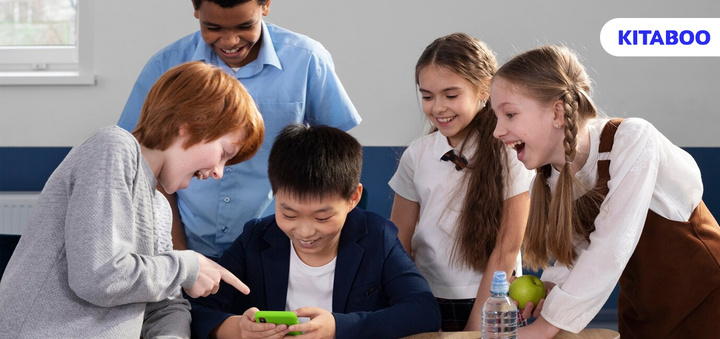
Incorporating Inclusivity: A Guide to Culturally Responsive Content Development
Summarize this blog with your favorite AI:
In the dynamic realm of K12 education, the call for inclusivity has become more than a mere echo. It is the resonant pulse that drives the transformation of learning landscapes.
The modern educator and content creator face a crucial choice. They don’t just share information. Instead, they craft materials woven into the diverse tapestry of backgrounds, cultures, and perspectives that define their audience.
This guide serves as a compass for managing editors navigating this intricate terrain. It offers nuanced strategies, not just to acknowledge but to authentically embrace these differences.
In essence, it unfolds a roadmap for crafting learning content that goes beyond the conventional, emphasizing inclusivity in educational materials. It embraces inclusivity as a catalyst for genuine connection and understanding in the educational sphere.
Table of Contents:
I. Understanding the Importance of Inclusivity in Educational Materials
- Conduct Comprehensive Research
- Diverse Authorship and Perspectives
- Sensitivity Training for Editors
- Inclusive Language and Imagery
- Cultural Consultation
- Incorporate Global Perspectives
- Flexibility and Adaptability
- Community Involvement
- Regular Review and Feedback Mechanisms
II. Wrapping Up!
Understanding the Importance of Inclusivity in Educational Materials
Inclusivity in educational materials ensures that every student, regardless of their background, feels represented and valued. This goes beyond token gestures; it involves a deep understanding of the cultural nuances that shape individuals.
By acknowledging and respecting diversity, educational content can become a powerful tool for promoting unity and understanding among students. Now, let’s explore actionable strategies to infuse inclusivity into educational materials effectively.
1. Conduct Comprehensive Research
To create truly inclusive educational materials, thorough research is the foundation. Delve into the cultural, historical, and social aspects relevant to the subject matter.
Understand the perspectives of different communities to present a well-rounded view of the content. This exhaustive exploration ensures accuracy and authenticity in representing diverse backgrounds, enriching the educational experience for all learners.
2. Diverse Authorship and Perspectives
Including diverse voices in the authorship of educational materials is pivotal. This ensures that the content reflects a variety of experiences and viewpoints.
Collaborate with writers from different backgrounds to bring authenticity to the narrative. This diversity in authorship enriches the content and broadens its appeal.
It fosters a sense of representation for students from various cultural contexts. In doing so, educational materials become mirrors reflecting the multiplicity of human experiences.
3. Sensitivity Training for Editors
As managing editors, prioritize providing your team with sensitivity training to enhance their cultural awareness. This training should emphasize the significance of avoiding stereotypes, cultural biases, or any form of inadvertent exclusion in the content.
Editors must comprehend the potential impact of their decisions on diverse cultural groups. They need to recognize their role as mediators in shaping inclusive educational narratives.
By investing in their cultural competence, editors become pivotal architects of content that informs and respects diverse perspectives.
4. Inclusive Language and Imagery
The language used in educational materials should be inclusive and free from cultural biases. Avoid terms that might be offensive or exclusive to certain groups.
Additionally, meticulously choose imagery that represents a variety of ethnicities, genders, and abilities. Visuals play a powerful role in shaping perceptions, contributing to a more comprehensive and inclusive experience for all.
You can leverage digital publishing tools like KITABOO to create engaging and interactive learning content. KITABOO goes beyond the confines of traditional reading, transforming educational materials into dynamic, immersive experiences that cater to the diverse needs of learners.
5. Cultural Consultation
Consider engaging cultural consultants during the content development process. These experts can provide valuable insights, ensuring that the content is respectful and accurate in its portrayal of different cultures.
Their guidance can prevent unintentional misrepresentations and reinforce cultural sensitivity. Integrating cultural consultants’ expertise is a cornerstone in crafting inclusive learning content.
These materials authentically represent diverse cultures, promoting inclusivity in educational settings.
6. Incorporate Global Perspectives
K12 Educational materials should not be confined to a single cultural lens. To foster a global mindset, incorporate examples and references from diverse regions.
This broadens students’ perspectives, promoting cross-cultural understanding and preparing them for an interconnected world.
Exposing learners to a rich tapestry of global perspectives also enriches their cultural intelligence and knowledge. This empowers them to navigate an interconnected world with empathy, adaptability, and a profound appreciation for diversity.
7. Flexibility and Adaptability
Acknowledge that K12 educational materials serve diverse student populations in various settings. Ensure that the content allows for flexibility and adaptability to cater to different cultural contexts.
This approach guarantees material remains relevant and inclusive across a wide range of educational environments. Embracing flexibility ensures that educational content remains a dynamic and responsive tool.
This tool is capable of resonating with the unique characteristics and requirements of diverse educational settings, fostering a universally inclusive learning experience.
In the dynamic field of K12 education, KITABOO shines as a robust and versatile digital textbook platform. Recognizing the diverse learning needs of individuals, KITABOO incorporates adaptive learning paths. This feature tailors content delivery based on individual progress and comprehension.
8. Community Involvement
Involve local communities in the content creation process. This engagement ensures that the material aligns with the values and expectations of the communities it serves.
Community input provides a real-world perspective that can greatly enhance the authenticity of educational content.
The integration of community insights creates educational content that’s not just informative but also culturally relevant. This strengthens its impact within the local context, making it more resonant.
9. Regular Review and Feedback Mechanisms
Establish a system for regular reviews and feedback from a diverse group of educators, students, and community representatives.
This ongoing process helps identify areas for improvement and ensures that the content remains culturally responsive over time. Embrace constructive criticism to refine and enhance inclusivity continually.
This approach ensures that the educational materials evolve in step with the changing dynamics of diverse learning environments. Regular feedback mechanisms become the compass guiding ongoing improvements, fostering a commitment to inclusivity and adaptability within educational content.
Wrapping Up!
Incorporating inclusivity into K12 educational materials is not merely a checkbox but a commitment to respecting and celebrating diversity. As a managing editor, you play a pivotal role in shaping content that transcends cultural boundaries, fostering an inclusive learning environment.
By following these strategies, you contribute to the creation of educational materials that empower students from all walks of life. This prepares them for a future that values and appreciates their unique contributions.
To elevate your content creation journey and implement these strategies seamlessly, explore KITABOO, the world’s leading digital textbook platform. Visit KITABOO’s official website to discover how this innovative tool can amplify inclusivity in educational materials.
Schedule a demo today to explore how we can help you craft enriched and dynamic learning experiences for diverse student populations.
To know more, write to us at contact@kitaboo.com.
Discover how a mobile-first training platform can help your organization.
KITABOO is a cloud-based platform to create, deliver & track mobile-first interactive training content.


